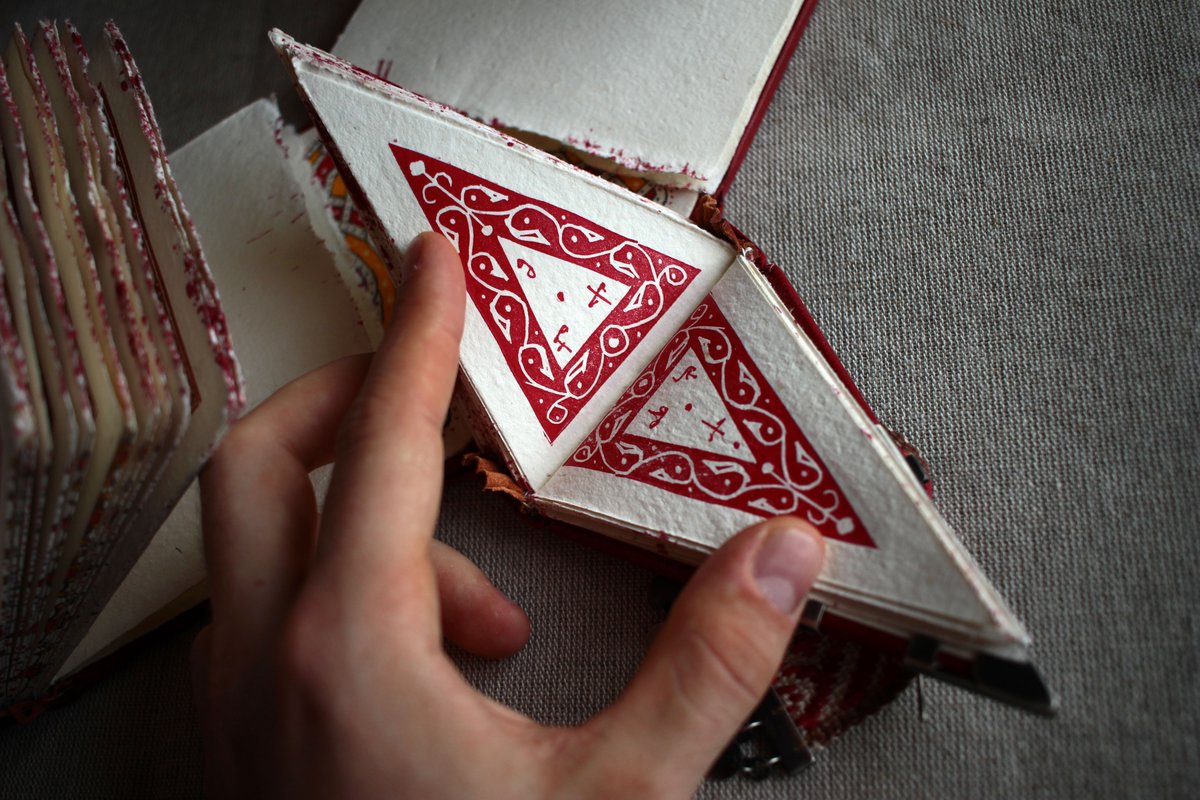
"The Superstitious Chorbaji" - an artist's book in an extraordinary three-part binding by the remarkable young Bulgarian bookbinder Kalin Daskalov, who works under the nom d'artiste of 'Stopan'. 1/ 

The book contains amuletic and protective spells, written in both Cyrillic and Glagolitic script, and is bound in three conjoined parts with woven strapwork, as imagined to have been once worn around the neck by a 17th century 'Chorbaji' (a kind of wealthy Bulgarian peasant). 2/ 





The texts - 5 in all - are interspersed with intricate totemic drawings, some within block-printed borders. Everything - binding, paper, text, printing, illumination, calligraphy - is created by Stopan himself. His father, an acclaimed silversmith, makes the silver fittings. 3/ 







This is a tour-de force of bookbinding, papermaking, calligraphy, weaving, printmaking, and silverwork all combined in one complex, multi-faceted work of art, which re-imagines Stopan's ancestral Bulgarian heritage in a stunningly creative way. 4/ 







You can watch a short video about the book here. 5/
• • •
Missing some Tweet in this thread? You can try to
force a refresh





























